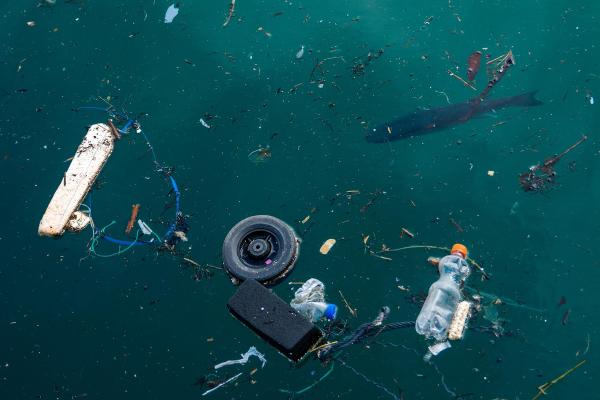The invisible obstacle
Much of the plastic around the world that enters the seas is in the form of particles smaller than 5 millimetres wide. These are called microplastics and it is common to find them in aquatic animals, which have ingested them. Much more research is needed on this topic, but microplastics are a direct threat to aquatic life and may indirectly hurt organisms that eat aquatic life—including humans.
In the European Union, many microplastics are captured by stormwater or wastewater collection systems and transported to treatment plants, which may be capturing up to 99% of the small particles. The captured microplastics end up in the sludge produced by treatment plants, and since this sludge is often used as fertiliser for farms, it can get back into the water through runoff. In this way, some of the microplastics in sludge could be entering the waterways, even after treatment plants do their work.
Microplastics are classified by some researchers as “primary” or “secondary.” Some primary microplastics are added to products on purpose, such as microbeads used in toothpaste and sunscreen. Other primary microplastics are created when tyres wear down on roads or when clothes rub together in a washing machine. Secondary microplastics form when plastic breaks down into smaller fragments in the water, such as what happens when a nylon fishing net is lost in the ocean. There is also larger plastic waste, such as plastic bottles. This type of waste is called macroplastic, and it could be stopped by putting in place proper waste management. Microplastics are the nearly invisible obstacle that can’t be solved easily. Many of the solutions for keeping these tiny plastics out of the waterways are still in development.






